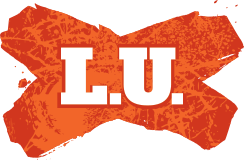Why Raiders, Jags must spend big
One of the important parts of the 2011 NFL collective bargaining agreement was a provision called the "minimum spend."
The minimum spend mandates that each team must spend 89 percent of the salary cap from 2013 to 2016 in cash. League-wide, the NFL's 32 teams must spend a combined 95 percent of the salary cap over those four years.
While the league as a whole is spending at the 95 percent level at the midway point of the minimum spend period, 10 teams are under the 89 percent threshold: Oakland, Jacksonville, Carolina, Dallas, Pittsburgh, Washington, New Orleans, New England and both New York teams
The question heading into the 2015 free-agency period is how the minimum spend provision, in its third year, will affect spending. For the Raiders and Jaguars, the impact could be huge.
The system pretty much mandates the Jaguars and Raiders to be the biggest players in free agency. After two years of the minimum spend period, the Raiders are at 80.19 percent of the 2011 and 2012 caps. The Jaguars are at 82.19 percent. Currently, the Jaguars are $66.8 million under the cap for 2015. The Raiders will be at $56.5 million under once the termination of safety Tyvon Branch's contract becomes official.
Don't be surprised if the Raiders make moves on four or five high-priced unrestricted free agents. The Jaguars could move on three or four big names. You could see tight end Julius Thomas and cornerback Byron Maxwell heading to Jacksonville, while the Raiders could go for defensive tackle Terrance Knighton, center Rodney Hudson, tight end Jordan Cameron and a top receiver who doesn't get franchised.
The biggest spenders in free agency usually don't succeed. Last year, the Tampa Bay Buccaneers spent more than $143 million on unrestricted free-agent contracts and ended up at the top of the draft after a 2-14 season.
But it's not out of the question that the right deals could move the rebuilding processes in Jacksonville and Oakland up by a year or two. Last year, both franchises appeared to make the right moves with the quarterbacks they drafted. The Raiders are optimistic about Derek Carr. Jacksonville's Blake Bortles struggled through his first season because he was asked to pass too much, but he has the look of a quarterback with a great future.
If the teams can surround their young quarterbacks with good talent, their records might improve. But they have to get it right. One of the reasons both teams are so far under the minimum spend level is that they don't have enough good, young players on the roster who are deserving of contract extensions. Under the current rules, a team can't give a draft choice an extension until his fourth year. The Raiders and Jaguars can't talk about extensions with Carr and Bortles until 2017, which doesn't help for the current minimum spend period.
With quarterbacks making between $16 million and $22 million a year, teams with franchise quarterbacks have little problem hitting the minimum spend. The Panthers, for example, underpaid the first two years, but they have to pay Cam Newton, so they won't have any problem catching up.
It might be surprising to see the Cowboys and Redskins on the list, but that can be attributed in part to the salary-cap penalties they were given for revamping contracts in the uncapped year of 2010. Dallas lost $10 million in cap space and Washington lost $36 million over the 2012 and 2013 seasons, which cut into their ability to spend in the first year of the minimum spend period.
Most of the teams under the 89 percent mark shouldn't have any problem reaching the minimum spend by 2016, but it could encourage them to be a little busier in free agency this year.
The stage is set for the Jaguars and Raiders to spend, spend, spend. Currently, the Raiders' cash payroll is at $78.7 million and the Jaguars' is at $86.4 million. Each team needs to spend $50 million to $65 million of additional cash to catch up to the rest of the league, which should make free agency fascinating.



